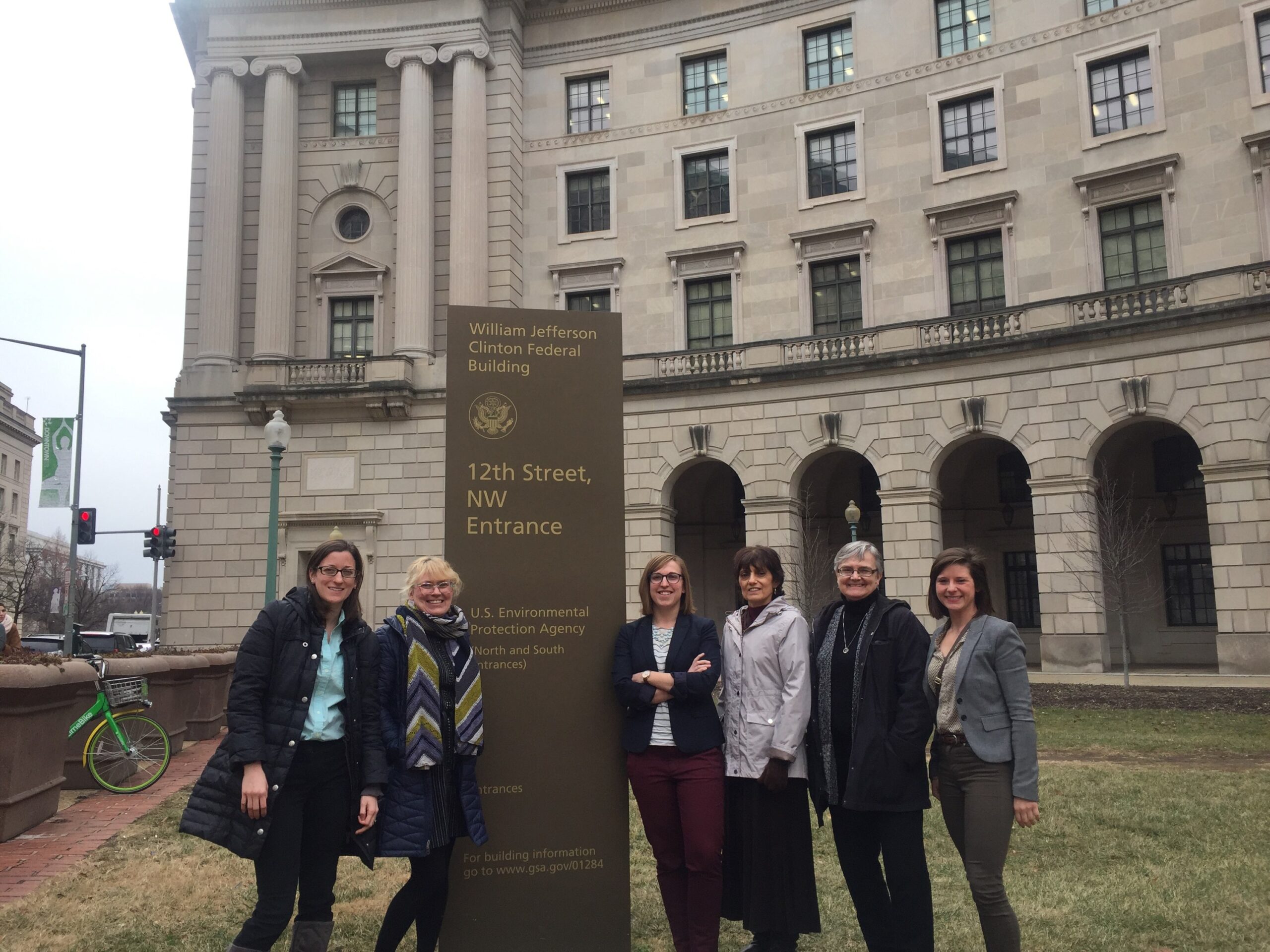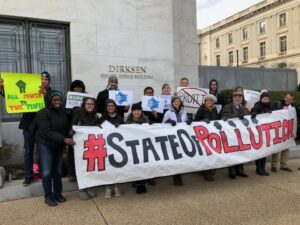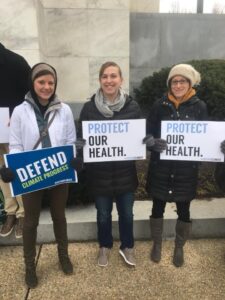The transportation sector is one of the largest sources of greenhouse gas emissions in the United States. In 2015, the sector was responsible for more than a quarter (27%) of total greenhouse gas emissions, just slightly behind the electricity sector (29%). In addition to the sector’s contribution to climate change, cars and trucks emit dangerous air pollutants, such as particle matter, sulfur dioxide, and nitrogen oxides that can cause harm to human health.
As a solution to reduce emissions that worsen climate change and to reduce dangerous air pollution from the transportation sector, federal and state vehicle emissions and a national program to implement these standards were developed. This national program represents a collaboration between three state and federal authorities: 1) National Highway and Safety Administration, part of the Department of Transportation (DOT), 2) U.S. Environmental Projection Agency (EPA), and 3) California Air Resources Board. Implementation of the standards for light-duty vehicles was outlined to occur in two phases, phase one setting standards for model years 2012-2016 and phase two for model years 2017-2025.
These standards spurs innovation in the auto industry to create clean vehicle and fuel technologies that help ensure that cars, pickup trucks, and SUVs continue to get more fuel-efficient. Cleaner, more efficient vehicles reduce air pollution and combat climate change – helping to prevent harmful health impacts like asthma attacks. While these standards are an essential climate and oil reduction program, the DOT, EPA, and members of Congress are working to weaken these important standards. In response to these potential rollbacks, ANHE nurses traveled to Washington DC to meet with their members of Congress to express support for strong clean cars standards. In addition, nurses participated in an event with various environmental organizations such as GreenLatinos, Moms Clean Air Force, and Hip Hop Caucus to voice disapproval of EPA Administrator Scott Pruitt’s leadership of the EPA as he appeared before the Senate Committee on Environment and Public Works.
To help protect these clean air safeguards, nurses can contact their members of Congress and let them know they support strong fuel economy regulations.







